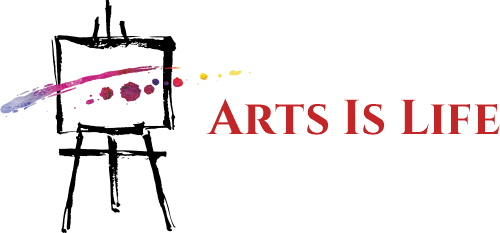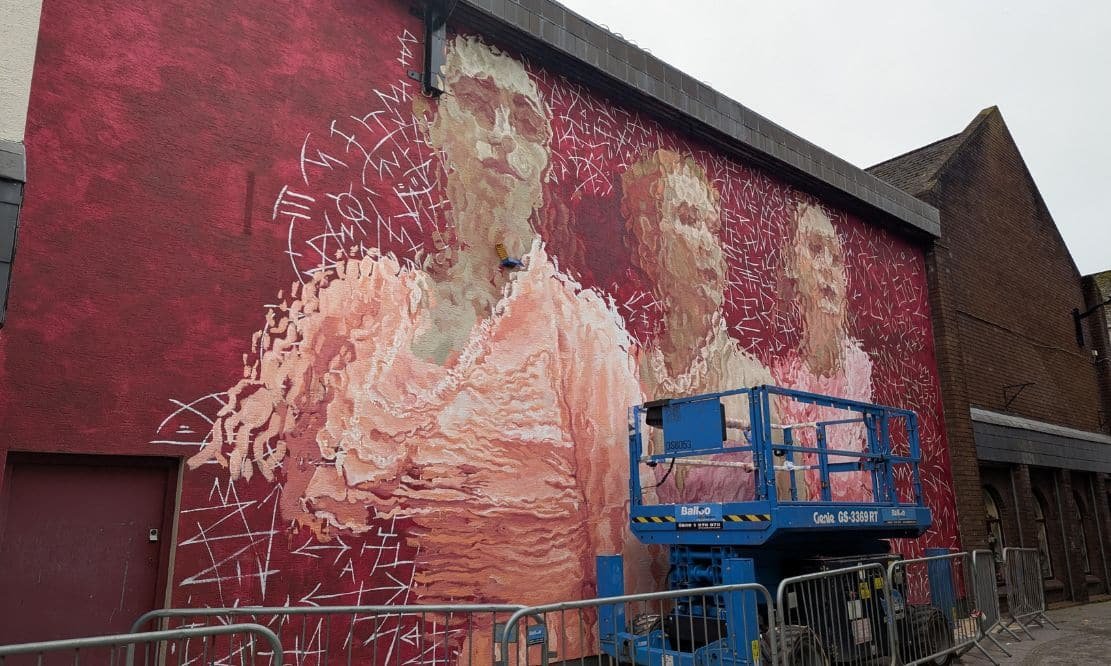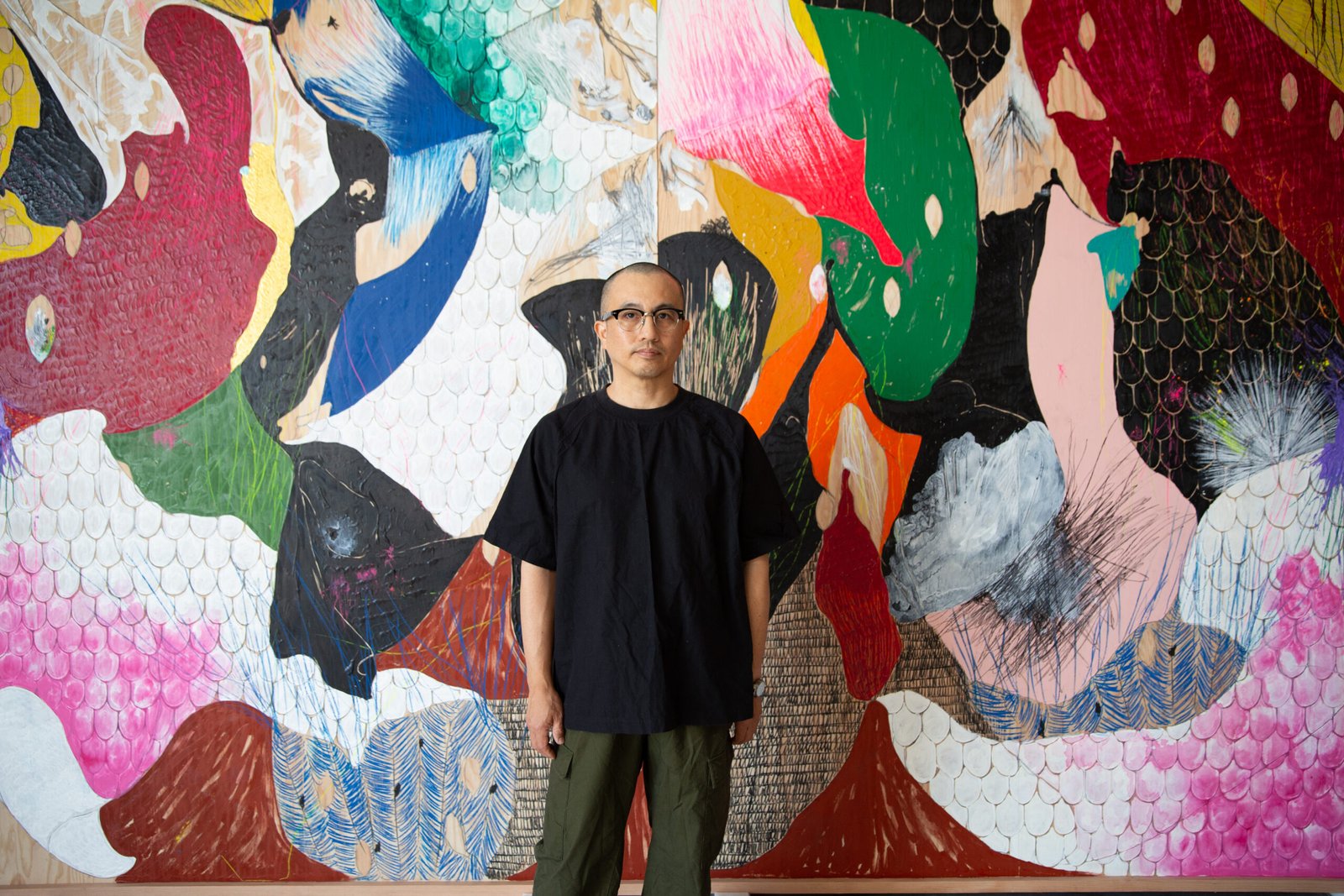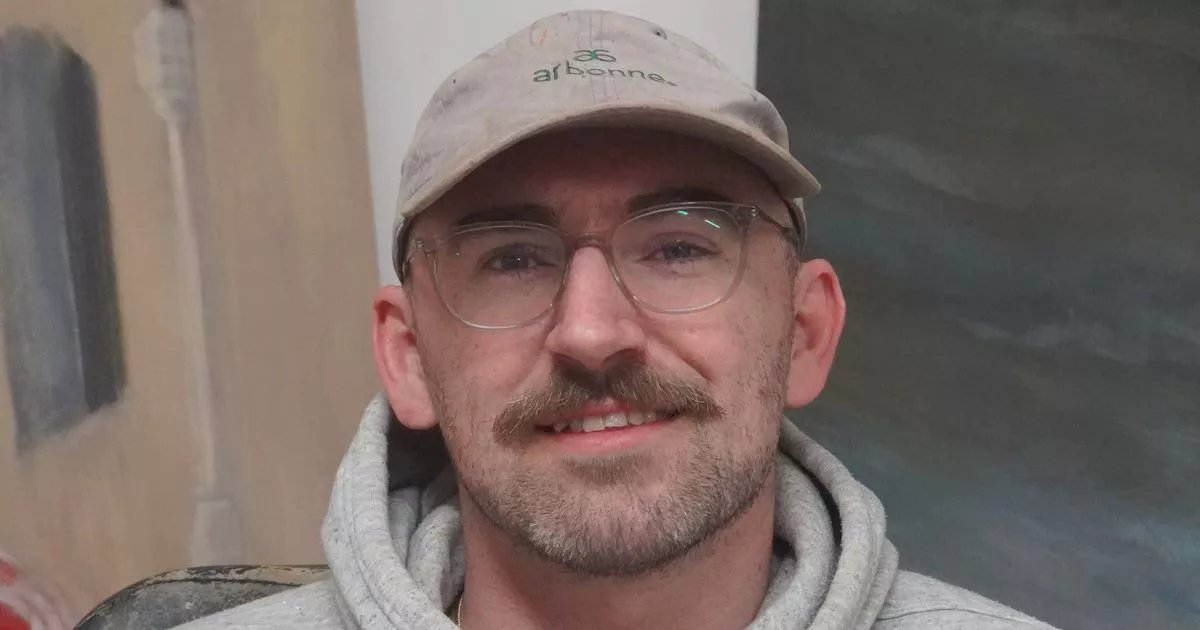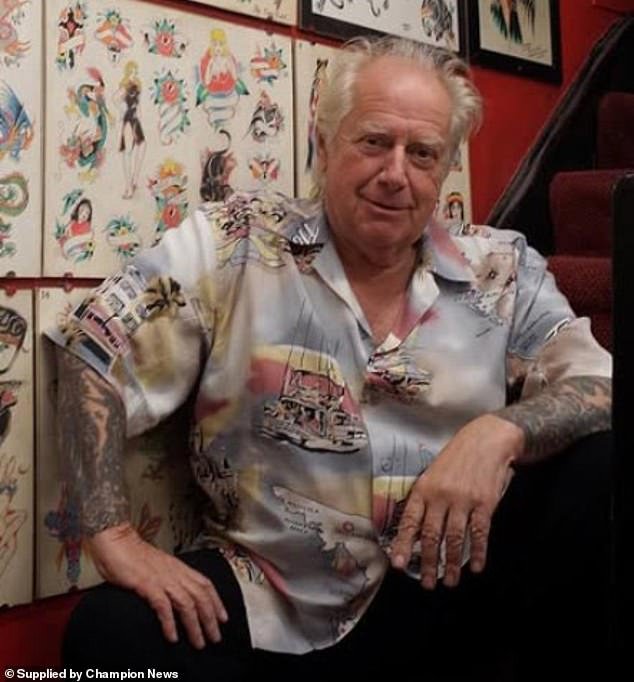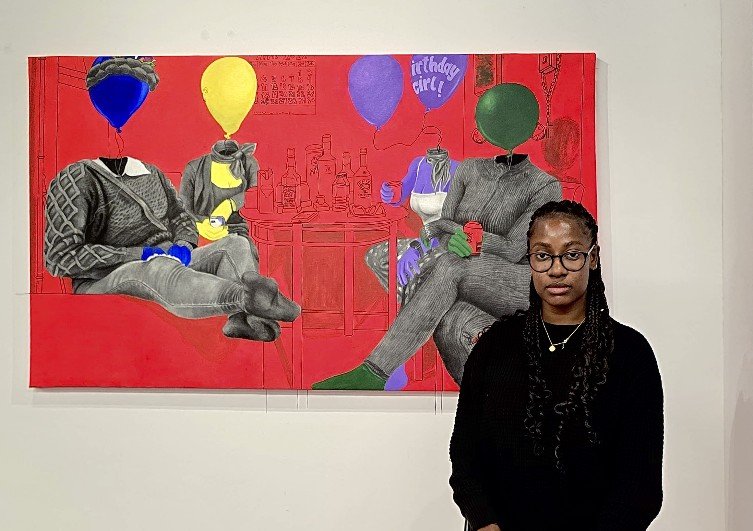
For some artists, Abstract Expressionism is a tool for bodily release; for Japan-born, Los Angeles-based Naotaka Hiro, it is first and foremost a vehicle of bodily awareness. Highly gestural and charged with primordial energy that connects body and mind, his abstraction tests the physical and perceptual limits of the self: painting and sculpture become both extensions and projections, blurring boundaries between inner and outer worlds, internal motion and external expression.
In “Of Two,” Hiro’s latest exhibition at Bortolami in New York, the artist continues his dialectical approach to mark-making, presenting a series of large-scale, vibrant abstractions alongside two bronze castings. At the core of his process—and the resulting works—is a constant oscillation between the two poles around which existence itself gravitates: rational control and intuition, mind and body, consciousness and unconsciousness.
After moving to Los Angeles with his family in 1991 and transferring to UCLA in 1994, Hiro studied under Paul McCarthy, chris burden and John Baldessari, absorbing the West Coast performance art scene’s attitude toward medium. His practice aligns with Baldessari’s studio explorations, where the act itself becomes the artwork and the body is both subject and medium. Like Baldessari, Hiro began exploring the body through video, a medium that allowed him to test limits and confront the idea of acting and existing as a singular entity in continuous interrelational flux. “I initially pursued filmmaking, but I quickly realized that the language barrier and the difficulties of collaborating with others made it nearly impossible for me to work in the traditional way,” Hiro tells Observer after the opening. From that point, he continued making films alone with a video camera. “This meant I was both the actor in front of the camera and the director behind it. I couldn’t fully embody both roles at the same time, so I kept recording, stopping and replaying. I reshot myself dozens, even hundreds of times, until I lost track of who was the actor and who was the director.”


Around the same time, in a sculpture class, Hiro began making body casts. The process mirrored what he was doing in video: using his body as both medium and subject while simultaneously observing it from the outside. “Very early on, I realized that I wasn’t interested in representation, but rather in what I call the ‘Unknown’—the murky space between the subjective and objective,” Hiro explains. “My work developed out of necessity, almost in a survivalist way, not in reaction to painting’s methodology or historical concepts.”
Much of Hiro’s drive to explore the expressive and existential space of the body stems from early experiences of cultural and identitarian displacement. Julia Kristeva’s notion of the “stranger within” suggests that we are all, to some degree, estranged from ourselves—a condition intensified by diasporic experience. For Hiro, art became a way to confront this inner foreignness, to externalize it and to use painting and sculpture as spaces to stage and reconcile estrangement. “The idea of the ‘stranger within’ connects directly to what I call the Unknown. At the root of my work is the fact that I cannot see myself with my own eyes,” Hiro says, explaining how even in art-making there are inevitably parts of his body he cannot perceive directly. We can only begin to understand the body through mediations like cameras or mirrors—and that dilemma becomes the starting point of creation. “From that blind spot emerges both anxiety and imagination. It creates a sense of estrangement from myself, which also connects to my diasporic experience of displacement. My practice arises from these encounters with the Unknown—meeting it, deciphering it, reacting to it and leaving a record of it. The works are evidence of this process: traces of my body, its positions and its movements.”


Hiro’s practice also examines how societal and psychological frameworks shape our awareness of the body, identity and existential space. At the same time, his work insists on the subject’s agency against objectification by medium, language, or preestablished aesthetic codes.
His abstractions unfold through a dynamic tension between intuition and control—between surrendering to the subconscious and performing deliberate, choreographed gestures. In his vertical unstretched canvas works, for example, Hiro wraps his body in loose fabric, painting and drawing in two-hour intervals from a central hole before unfurling the material to reveal the performance within. For him, confronting the “Unknown” means accepting the body as a conduit for something that precedes rational expression while simultaneously constructing a personal system of meaning, finding reason within both inner and outer motion. “Repeating this process allows me to access the Unknown that lies in between, as if subjectivity and objectivity swing back and forth like a pendulum.”
This interplay between subject and object first emerged in his filmmaking practice, where Hiro created storyboards that captured fragments of repeated movements and poses rather than fixed narratives. From there, he developed wearable masks with holes, life-size drawings and canvases wrapped around his body to trace gesture and position. Later, he shifted to wood panels. “With soft materials like paper or canvas, I could wrap my body; with wood, I had to press myself against the surface. In this sense, canvas is like a 360-degree body scanner, while wood functions like a flatbed scanner,” explains Hiro, noting how these experiments embodied a dialectical tension that confronted both body and psyche in the liminal space between them.
He eventually discovered that using a wood frame raised a foot above the ground allowed him to crawl beneath and draw upward, separating two personas. “Under the frame, I am the actor. When I flip the panel over, I become the director, analyzing and editing,” he reflects. Repeating this process enables him to access the Unknown that lies in between, as if subjectivity and objectivity swing back and forth like a pendulum.


For Hiro, this performative act of mark-making allows colors and patterns to form a personal and autonomous code, similar to a map or anatomical diagram. “A red line shows how I moved, a green field indicates where I lingered,” he says. Hiro also sets timers—every hour or two—to stop. “This prevents endless reworking and keeps the performance clean,” he explains. “In the end, the rules I set are my own, and I can break them if I want. They are not rigid laws, but more like the rules of a sport or game—something to play within, sometimes even to violate.”
At the same time, through his relentless and freely experimental approach to unconventional forms of mark-making, Hiro continually tests new ways of creating visual codes that emerge from the relationship between the body and the medium. His practice could be linked to the Gutai movement, where the body became both subject and tool. Yet his exploration is less about rebellion or asserting autonomy, as it was in postwar Japan, and more about mapping the physical and psychic spaces he inhabits through creative expression.
Interestingly, Hiro only learned about the Gutai movement after moving to the U.S. “Paul McCarthy introduced me to Gutai, to Tetsumi Kudo and to Viennese Actionism. I was shocked—I had never seen Gutai before, yet I immediately felt not just a connection but almost a familial bond.” It was as if he had suddenly discovered his roots. The relationship between body and material, the confusion and experimentation he had been experiencing in a foreign country—all of it was there, already transformed into art. “My knowledge of Gutai came through the filter of West Coast artists, but it also felt like returning home. Gutai was founded in Osaka, the city where I was born, so the connection felt almost familial, as if I had rediscovered a lost relative.”
Like Gutai, Hiro makes the body both medium and measure, translating psychic states into gestures while testing the body’s physical and psychological limits. His practice recalls Merleau-Ponty’s phenomenology, becoming a visual exercise in “embodied perception.” Yet Hiro is clear that he does not view painting as primary. Instead, he sees his works as akin to videotapes or film reels documenting his body and emotions over time. For him, the canvas is less an image to contemplate than a record of lived experience, a residue of presence and absence. “In that sense, the work is not about representation, but about recording the encounter between my body, my emotions and the surface,” he explains.


This reflection also recalls principles of traditional Japanese painting and Eastern philosophy, which emphasize the unity of body and mind in mark-making, valuing process as much as outcome and treating artistic practice as a meditative tool to deepen awareness of the self and its connection to the universe. While Hiro has never formally studied Japanese art—and in terms of methodology or theory, the influence is almost nonexistent—he grew up immersed in a Buddhist environment, where this mindset and spirituality were absorbed naturally and now quietly shape his work. “I grew up in Nara, surrounded by Buddhist temples and images and as part of a Buddhist family, I absorbed certain ethics and ideas unconsciously,” he admits.
In the exhibition, Hiro also presents two seated bronze cast sculptures in meditative poses. “These were based on what I did in my studio after suffering from severe COVID and long-lasting symptoms,” he explains. “Each day, I would sit cross-legged and scan my body—from my toes up to my ears—observing pain, heartbeat, fever and breath. I tried to rewire the signals, looping through them over and over.” At the time, he didn’t even realize this could be called meditation. “It was simply something I had to do, alone, to keep working.”
Placed at the center of the gallery, the two sculptures, Plot, Perpetual and Plot, Rerouted, are the result of a durational performance and meditation session in which the artist covered his body with material, allowing silicone to dry on his skin as he held a pose. The process captured the body’s subtle shifts and movements—the breath and flow of life within—even in stillness.


From this body of work and its underlying reflections, Naotaka Hiro’s practice can also be understood as an expression of Heidegger’s notion of Dasein—an inquiry into what it means to be in the world. His canvases and sculptural body castings become sites of psychosomatic exploration and recognition, where the sense of self and being-in-the-world, as part of a dynamic network of relations, is materially and three-dimensionally reconstituted.
Hiro acknowledges this association but explains that his inquiry originates in a much simpler way. “The foundation of my work comes from the idea of the ‘Unknown.’ If I put it in the simplest way, I can’t see myself with my own eyes. It is a dilemma, a limitation of perceiving my own body,” he emphasizes, describing his practice as a means to define, investigate and confront this Unknown—to live with the dilemma in full awareness of this existential condition. “I don’t try to overcome it—I try to live with it,” he clarifies. “The dilemma evokes horror and anxiety but creates awe and wonder. In other words, it is the anxiety that I might not even exist.” Making art becomes a way to remain within that paradox that defines human existence—to sit with uncertainty, to inhabit it and to find meaning in its perpetual tension.
Naotaka Hiro’s “Of Two” is at Bortolami in New York through November 1, 2025.
More in Artists
